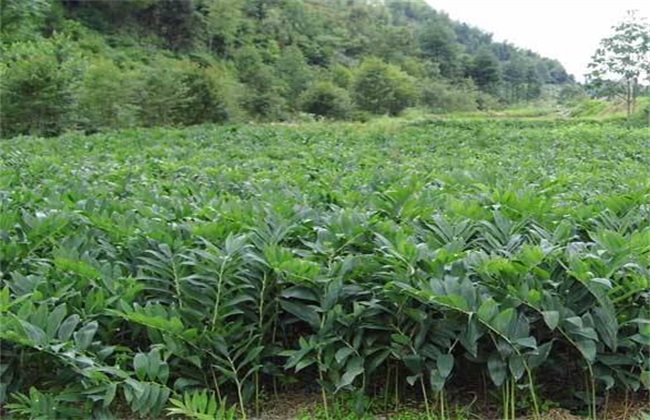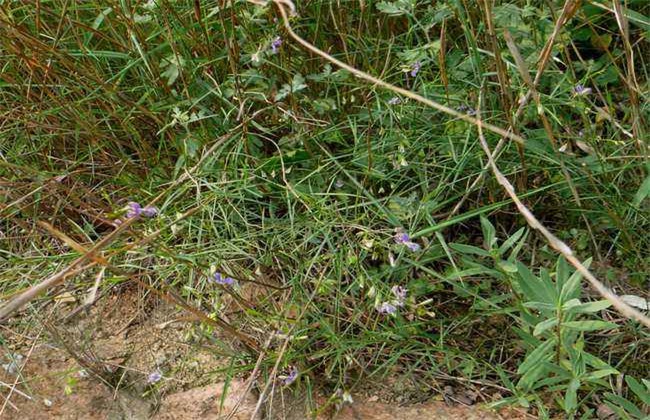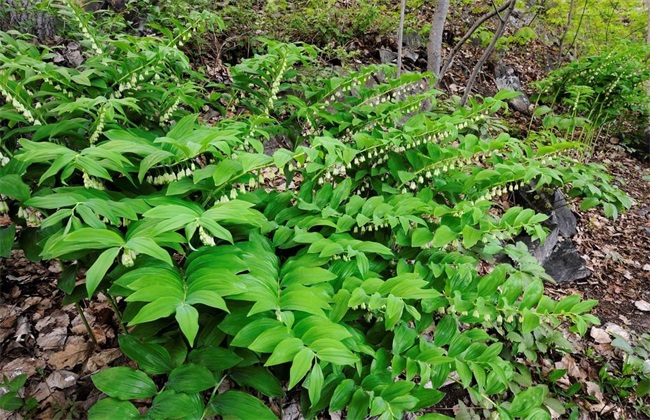Field Management method of Polygonatum odoratum
Polygonatum odoratum is a recorded traditional Chinese medicine in China, which is widely used in many places and industries. As the annual sales of Polygonatum odoratum increase, the wild number of Polygonatum odoratum is decreasing. Therefore, now the artificial planting area is gradually expanding, when planting Polygonatum odoratum, if you want to increase the yield, it is necessary to do a good job of management. So the editor today brings you the field management method of Polygonatum odoratum. Let's take a look at it.

1. Seedling emergence management
We are in the period from planting the stem to emergence. The situation in the field should be checked frequently. If there is a lack of mulch, it must be made up in time, and attention should be paid to keeping the soil moist and promoting germination. When the stem emerges, the mulch on the border should be removed in time to avoid blocking the top soil of the seedling, affecting the emergence rate, causing injury of the seedling and so on. If the covering is a pine needle, a thinner layer can be retained. It can not only improve the soil moisture conservation ability, but also inhibit the growth of weeds and reduce the cost of artificial ploughing.
2. Suitable seedlings
After the seedlings are unearthed, the management and inspection should be strengthened. In the process of seedling growth, we should do a good job of interplanting seedlings according to the emergence rate and the growth of seedlings. When the seedlings grow to about 9 centimeters high, if the growth is too dense, then it is time to grow seedlings. The inter-seedling follows the principle of staying strong and removing the weak, which provides sufficient space for the growth of robust seedlings. Then we have to do a good job of weeding, especially in the seedling stage. If there are too many weeds, it will lead to malnourished growth of seedlings, so it is necessary to see weeds. Try to avoid hoes and hoes to prevent damage to the roots of seedlings. Pull the soil by hand when the soil is dry, and stop pulling the grass after rain or when the soil is wet.
3. Water and fertilizer management
The topdressing of Polygonatum odoratum is very important. when planting, we should adjust the fertilization method reasonably according to the number of years of raising seedlings. If the seedling raising time is one year, then under the premise of applying sufficient base fertilizer, there is basically no need to apply fertilizer. If the seedlings were raised for two years, then generally, after the plants on the ground withered, an appropriate amount of organic fertilizer was applied at the beginning of winter, and the amount was controlled at 2000kg/ mu. In the seedling stage, we should also pay attention to do a good job of watering, when the soil is dry, we should water in time. But should not be too much, in the rainy season should also do a good job of drainage.
4. Shade and prevent cold
Although the growth of Polygonatum odoratum needs some light, it is very sensitive to light intensity. Therefore, when we plant Polygonatum odoratum, we should pay attention to shading work. We can plant some tall crops such as corn beside the border to provide shade for Polygonatum odoratum, or build a shade shed after the seedlings are unearthed. Then cover the soil with leaves, straw and so on after the annual seedlings have withered and before the soil freezes. Improve the heat preservation capacity of soil and promote Polygonatum odoratum seedlings overwintering.
The above is a brief introduction to the field management methods of Polygonatum odoratum. The management of Polygonatum odoratum is very important and has a direct impact on output, so we must pay more attention to it. That's all for today's introduction. This article is for reference only. I hope it can help you all.
Related
- Fuxing push coffee new agricultural production and marketing class: lack of small-scale processing plants
- Jujube rice field leisure farm deep ploughing Yilan for five years to create a space for organic food and play
- Nongyu Farm-A trial of organic papaya for brave women with advanced technology
- Four points for attention in the prevention and control of diseases and insect pests of edible fungi
- How to add nutrient solution to Edible Fungi
- Is there any good way to control edible fungus mites?
- Open Inoculation Technology of Edible Fungi
- Is there any clever way to use fertilizer for edible fungus in winter?
- What agents are used to kill the pathogens of edible fungi in the mushroom shed?
- Rapid drying of Edible Fungi



